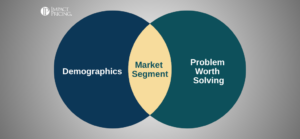The answer is both No and Yes. Almost everything you need to consider when pricing a subscription also needs to be considered in other non-subscription type offerings.
For example, subscription pricing requires:
- Pricing to acquire new customers
-
Promotions to acquire new customers
-
Price relative to value in choice
-
Price relative to value in use
-
Keeping customers satisfied and coming back
-
Tweaking your product to make customers happier
-
Selling more of the same to your customers
-
Upselling to customers
-
Cross-selling to customers
-
Lifetime value of customer considerations
-
Customer acquisition costs
-
Segmentation
-
Understanding your product value
-
Communicating your product value
-
Teaching salespeople not to discount too much
Although every one of these can be found in a non-subscription business, most subscription businesses manage all the above simultaneously. Yes, that’s a difference. But possibly the three biggest areas where subscriptions are different are below.
You manage different metrics
The key metrics for traditional businesses are revenue and profit growth, typically coming from selling more units. In subscriptions, you have to clearly break down revenue into three buckets, acquisition, retention, and expansion. Each one of these three revenue categories requires different business activities.
If you’re not familiar, here are the revenue categories:
- Acquisition is like a traditional business. Sales and Marketing trying to win new customers.
- Retention is the opposite of churn. Once you win a customer, you need to keep them happy, so they keep paying you.
- Expansion is how can you get current customers to buy more from you?
The metrics that matter are different depending on which of these revenue buckets you are managing. There will be more about metrics in a future post.
Second, there is a critical concept called the pricing metric, what do you charge for? Do you charge for access to the features? Per-user? Per megabyte? Per transaction? In subscriptions, this is a crucial decision. It impacts acquisition, retention, and expansion, and it’s very closely tied to the product and the customer’s value. More on the pricing metric in later posts as well.
Finally, fast-growing subscription companies frequently tweak their product packaging and their pricing. The goal is to add and capture more value from your subscribers. This is especially important in the expansion portion of revenue. Over time, you should get customers to pay you more because they:
- Use your product more
- Buy more capabilities from you
- Purchase complementary products or subscriptions from you. This is a big driver in most successful SaaS companies.
It is practically impossible to talk about subscription pricing without a clear understanding of the entire business model. It isn’t just about winning new customers. It’s also about keeping them and growing them. The metrics managed throughout the company are different. If you want to get your pricing right, you have to think about the entire business.
In the coming blogs, we will write more about subscription pricing. Stay tuned and please share your thoughts as well. This is a fascinating topic.














